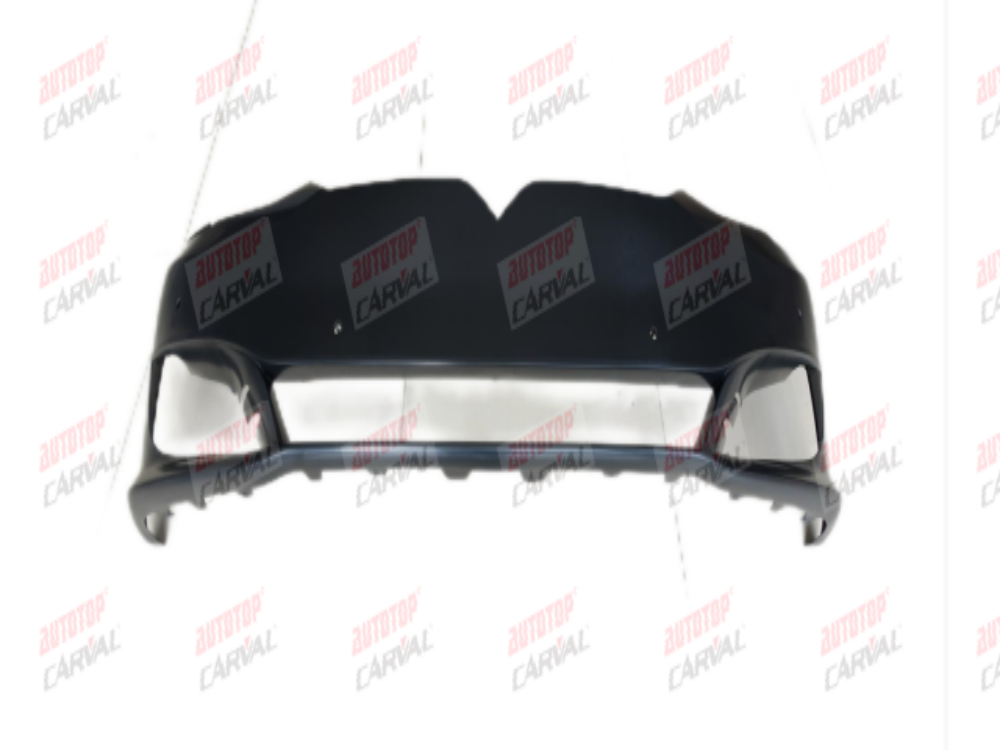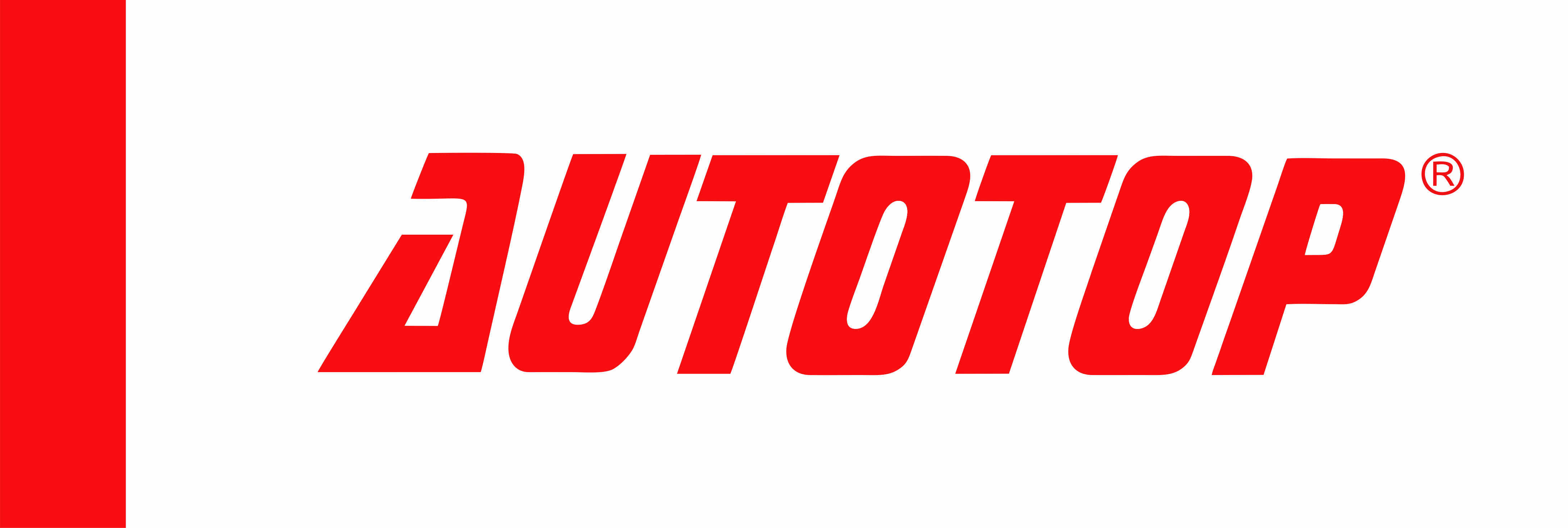การเข้าใจฟังก์ชันและดีไซน์ยุคใหม่ของกระจังหน้ารถยนต์
จุดประสงค์หลัก: การระบายความร้อน, การป้องกัน และอากาศพลศาสตร์
กระจังหน้ารถยนต์มีหน้าที่หลายอย่างที่สำคัญ แต่หน้าที่หลักน่าจะเป็นการช่วยระบายอากาศเพื่อทำให้เครื่องยนต์เย็นลงได้ดีขึ้น สำหรับรถยนต์สปอร์ตหรือรถสมรรถนะสูงที่ใช้งานหนักและเกิดความร้อนมาก การระบายอากาศจึงมีความสำคัญอย่างยิ่ง กระจังหน้าจะช่วยควบคุมทิศทางของอากาศให้ไหลไปยังจุดที่ต้องการ คือบริเวณหม้อน้ำและรอบๆ เครื่องยนต์ เพื่อป้องกันไม่ให้ระบบทำงานล้นเกินจนเครื่องร้อน และช่วยให้ระบบทำงานได้อย่างราบรื่น กระจังหน้ายังทำหน้าที่ป้องกันสิ่งแปลกปลอมจากภายนอกไม่ให้เข้ามาภายใน ช่วยป้องกันเศษหิน แมลง ใบไม้ และสิ่งสกปรกบนถนนไม่ให้เข้าไปยังชิ้นส่วนที่สำคัญภายใต้ฝากระโปรง หากปราศจากสิ่งป้องกันเหล่านี้ เครื่องยนต์จะเสียหายได้ง่ายขึ้นเมื่อใช้งานไปนานๆ ดังนั้นแม้ว่ากระจังหน้าจะดูเหมือนเป็นเพียงส่วนตกแต่งด้านหน้าของรถยนต์ แต่จริงๆ แล้วมันมีบทบาทสำคัญในการช่วยให้รถยนต์ทำงานได้อย่างเต็มประสิทธิภาพในระยะยาว
การออกแบบกระจังหน้ารถยนต์มีบทบาทสำคัญต่อสมรรถนะของรถยนต์ในการตัดผ่านอากาศ ซึ่งส่งผลต่อปริมาณเชื้อเพลิงที่ถูกเผาผลาญ เมื่อวิศวกรมีการออกแบบและวางตำแหน่งกระจังหน้าอย่างพิถีพิถัน จะช่วยลดแรงต้านลม ทำให้รถยนต์ไม่ต้องเผชิญกับแรงลมต้านทานมากเกินไป ผลลัพธ์ที่ได้คือประสบการณ์การขับขี่ที่ราบรื่น และอัตราการประหยัดน้ำมันที่ดีขึ้น ในปัจจุบัน ประสิทธิภาพในการใช้เชื้อเพลิงมีความสำคัญมากกว่าที่ผ่านมา เพราะผู้คนให้ความสำคัญทั้งเรื่องค่าใช้จ่ายและสิ่งแวดล้อม หากมองจากอีกมุมหนึ่ง กระจังหน้าไม่ได้มีไว้เพื่อความสวยงามเพียงอย่างเดียวอีกต่อไป แต่ยังทำหน้าที่หลากหลาย โดยผสมผสานความรู้ทางวิศวกรรมศาสตร์เข้ากับการออกแบบเชิงสร้างสรรค์ เพื่อตอบสนองความต้องการต่าง ๆ ที่รถยนต์ยุคใหม่จำเป็นต้องมี
ผลกระทบด้านความสวยงามต่อเอกลักษณ์ของยานพาหนะและการสร้างแบรนด์
กระจังหน้ารถยนต์มีหน้าที่มากกว่าแค่เพียงการรับลมเข้าไปข้างใน มันมีบทบาทสำคัญอย่างมากในเรื่องของความสวยงามของรถโดยรวม และภาพลักษณ์ของแบรนด์ที่สื่อออกมา รูปทรงและสไตล์ของกระจังหน้าเป็นสิ่งที่กำหนดลักษณะทางสายตาของรถยนต์โดยตรง ลองคิดถึงมันเหมือนกับจุดเด่นเฉพาะตัวที่ทำให้รถคันหนึ่งแตกต่างจากรถยี่ห้ออื่นบนท้องถนน ตัวอย่างเช่น BMW กับกระจังหน้ารูปไต้ที่เป็นเอกลักษณ์ หรือ Lexus กับการออกแบบกระจังหน้ารูปทรงสปินเดิลที่โดดเด่นไม่ซ้ำใคร รูปแบบกระจังหน้าเหล่านี้ไม่ได้มีไว้เพื่อตกแต่งเพียงอย่างเดียวเท่านั้น คนส่วนใหญ่สามารถจดจำและเชื่อมโยงรูปทรงเหล่านี้กับแบรนด์รถยนต์ที่เกี่ยวข้องได้ทันที เมื่อผู้คนมองเห็นกระจังหน้าในรูปแบบเฉพาะนั้น พวกเขารู้ได้ทันทีว่ารถยนต์คันนั้นผลิตโดยผู้ผลิตใด นอกจากความสวยงามแล้ว ดีไซน์เหล่านี้ยังเป็นตัวแทนของแนวคิด และตำแหน่งทางการตลาดของแบรนด์นั้นๆ อีกด้วย
สิ่งที่เรากำลังเห็นในตอนนี้เกี่ยวกับกระจังหน้ารถคือพื้นที่คนส่วนใหญ่กำลังให้ความสนใจอยู่มีสองแนวทางหลัก คือ ขนาดใหญ่หรือเรียบง่ายสุด ๆ กระจังขนาดใหญ่จะให้ความรู้สึกที่แข็งแกร่งและดุดัน ซึ่งเป็นสิ่งที่หลายคนต้องการสำหรับรถยนต์หรูหรือรุ่นสปอร์ต ในทางกลับกันกระจังขนาดเล็กจะดึงดูดผู้ซื้อที่ชอบความเรียบง่ายและไม่หวือหวา ผู้ผลิตรถยนต์ทราบเรื่องนี้ดี เพราะกระจังหน้าไม่ได้มีหน้าที่เพียงแค่ให้ดูดีเท่านั้น แต่ยังสื่อถึงลักษณะเฉพาะของรถยนต์คันนั้นด้วย พวกมันจำเป็นต้องสอดคล้องกับองค์ประกอบอื่น ๆ ของรถ และสื่อสารตรงถึงกลุ่มเป้าหมายที่อาจเป็นเจ้าของรถคันนั้นในอนาคต
เทคโนโลยีใหม่ที่กำลังเกิดขึ้น: ชัตเตอร์ทำงานอัตโนมัติและระบบบูรณาการ LED
อุตสาหกรรมยานยนต์ได้เห็นการพัฒนาเทคโนโลยีช่องดักลม (Grille) ที่น่าสนใจในช่วงไม่กี่ปีที่ผ่านมา โดยมีคุณสมบัติที่โดดเด่นอย่างเช่น ชัตเตอร์ปรับระดับได้ (Active Shutters) และไฟ LED แบบติดตั้งในตัว (Integrated LEDs) ซึ่งกำลังได้รับความนิยมมากขึ้น ชัตเตอร์ช่องดักลมแบบปรับระดับได้นี้ แท้จริงแล้วเป็นอุปกรณ์ที่มีความอัจฉริยะเล็กๆ ตัวหนึ่ง มันสามารถปรับการไหลเวียนของอากาศผ่านหม้อน้ำ (Radiator) ตามความต้องการของเครื่องยนต์ในแต่ละขณะ โดยคำนึงถึงทั้งค่าอุณหภูมิที่ตรวจจับได้และระดับความเร็วของรถยนต์ขณะวิ่งบนถนน เมื่อมันเปิดและปิดโดยอัตโนมัติ ก็จะช่วยให้ระบบทำงานที่อุณหภูมิเหมาะสมที่สุดโดยไม่สิ้นเปลืองพลังงาน นอกจากนี้ ยังช่วยให้รถตัดผ่านอากาศได้ดีขึ้น ทำให้แรงต้านลดลง และประหยัดน้ำมันมากยิ่งขึ้นโดยรวม สำหรับผู้ที่ใส่ใจผลกระทบต่อสิ่งแวดล้อม เทคโนโลยีประเภทนี้มีความสำคัญอย่างมากต่อพฤติกรรมการขับขี่ในชีวิตประจำวัน รวมถึงค่าใช้จ่ายด้านเชื้อเพลิงในระยะยาว
การติดตั้งไฟ LED ไว้ภายในกระจังหน้ารถยนต์นั้นทำมากกว่าแค่ให้รถยนต์ดูดีขึ้นในเวลากลางคืน เพราะแท้จริงแล้วมันช่วยให้ผู้ขับขี่มองเห็นและสามารถมองเห็นได้ชัดเจนยิ่งขึ้น ผู้ผลิตต่างออกแบบการแสดงแสงไฟที่ซับซ้อนหลากหลายรูปแบบ ตั้งแต่แถบไฟตกแต่งแบบง่าย ๆ ไปจนถึงลวดลายที่เปลี่ยนแปลงได้ตามสภาพการขับขี่ บางรุ่นยังมีไฟที่กระจังหน้าซึ่งกระพริบเมื่อเบรกหรือเลี้ยวอีกด้วย จากรายงานอุตสาหกรรมล่าสุด ยอดขายรถยนต์ที่มาพร้อมระบบไฟอัจฉริยะเหล่านี้เพิ่มขึ้นอย่างมากในช่วงไม่กี่ปีที่ผ่านมา ผู้ซื้อรถยนต์ดูเหมือนต้องการทั้งความสวยงามและประโยชน์ใช้สอย ซึ่งเป็นเหตุผลว่าทำไมเราจึงเห็นว่าคุณสมบัตินี้กลายเป็นอุปกรณ์มาตรฐานในหลายยี่ห้อ สำหรับผู้ผลิตรถยนต์ แนวโน้มนี้แสดงถึงสิ่งที่ใหญ่กว่าแค่การขายเทคโนโลยีใหม่ที่ดูแวววาว มันสะท้อนการเปลี่ยนแปลงไปสู่การผสานรวมคุณสมบัติขั้นสูงเข้ากับองค์ประกอบการออกแบบแบบดั้งเดิม โดยไม่ละเลยคุณภาพขององค์ประกอบใดองค์ประกอบหนึ่ง
5 ปัจจัยสำคัญสำหรับการเลือกกระจังหน้ารถยนต์
ความทนทานของวัสดุ: สแตนเลส เทียบกับ อะลูมิเนียม เทียบกับ ABS
การเลือกวัสดุที่เหมาะสมสำหรับกระจังหน้ารถนั้นมีความสำคัญอย่างมากในเรื่องของความทนทานและการทำงานโดยรวม ลองมาดูตัวเลือกหลักๆ สามแบบ ได้แก่ สแตนเลส สตีล อลูมิเนียม และพลาสติก ABS สแตนเลส สตีลมีจุดเด่นตรงที่ไม่เป็นสนิมง่ายและสามารถทนต่อสภาพการใช้งานที่รุนแรง ซึ่งทำให้เหมาะสำหรับใช้ในพื้นที่ที่หิมะและเกลือน้ำแข็งทำความเสียหายให้กับรถในช่วงฤดูหนาว กระจังหน้าอลูมิเนียมมีน้ำหนักเบาและไม่เป็นสนิมเช่นกัน แต่ผู้ขับขี่จำเป็นต้องทำความสะอาดบ่อยกว่าวัสดุสแตนเลส สตีล ส่วนพลาสติก ABS นั้นสามารถรับแรงกระแทกได้ดีโดยที่ไม่แตกหัก แต่จะอ่อนตัวลงเมื่อถูกความร้อนสูงเป็นเวลานาน บางคนอาจชอบวัสดุชนิดหนึ่งมากกว่าอีกชนิดหนึ่งขึ้นอยู่กับลักษณะการขับขี่ของพวกเขา เช่น กลุ่มคนที่ชอบขับรถออฟโรดอาจเลือกใช้สแตนเลส สตีล ในขณะที่ผู้ขับขี่ในเมืองอาจชอบอลูมิเนียมที่มีน้ำหนักเบาและดูแลรักษาง่ายกว่า โดยสรุปแล้วการตัดสินใจเลือกวัสดุขึ้นอยู่กับการชั่งน้ำหนักหลายปัจจัย เช่น งบประมาณ สภาพอากาศ และความสวยงามที่เข้ากับยี่ห้อและรุ่นของรถนั้นๆ
การปรับความหนาแน่นของตาข่าย: การระบายอากาศเทียบกับการป้องกันเศษขยะ
การเลือกความหนาแน่นของตาข่ายให้เหมาะสมมีความสำคัญมากเมื่อพูดถึงการไหลเวียนของอากาศ และการป้องกันเศษสิ่งสกปรกไม่ให้เข้าไปในช่องดักลมของรถยนต์ ผู้ผลิตจำเป็นต้องหาจุดสมดุลที่เหมาะสม ซึ่งอากาศจะต้องไหลผ่านได้เพียงพอเพื่อให้เครื่องยนต์เย็นตัวลงได้ โดยไม่ให้อนุภาคขนาดใหญ่ เช่น ฝุ่นถนนหรือใบไม้ หลุดเข้าไปภายในและก่อให้เกิดปัญหาต่าง ๆ จากประสบการณ์ที่ผ่านมา หากตาข่ายมีความละเอียดมากเกินไป อาจช่วยกรองสิ่งสกปรกได้ดี แต่กลับทำให้อากาศไหลเวียนไม่สะดวก จนนำไปสู่ปัญหาเครื่องยนต์ร้อน ส่วนหากตาข่ายห่างเกินไป เครื่องยนต์อาจเย็นตัวได้ดี แต่ก็ทำให้ก้อนหินหรือกิ่งไม้เล็ดลอดเข้ามาได้ง่าย รถยนต์แต่ละประเภทต้องการแนวทางที่แตกต่างกัน รถสปอร์ตมักใช้ตาข่ายที่แน่นกว่า เนื่องจากถูกใช้งานอย่างหนักและวิ่งด้วยความเร็วสูง ในขณะที่รถบรรทุกมักใช้ตาข่ายที่ห่างกว่า เพราะต้องวิ่งบนถนนที่สภาพไม่ดีเป็นเวลานาน สมดุลระหว่างการป้องกันและการระบายอากาศนี้มีผลโดยตรงต่ออายุการใช้งานของเครื่องยนต์ ก่อนที่จะต้องซ่อมแซมหรือเปลี่ยนเครื่องใหม่

ความเข้ากันได้ของเรดาร์/เซนเซอร์สำหรับระบบ ADAS
ในปัจจุบัน การออกแบบกระจังหน้ารถให้ทำงานร่วมกับระบบช่วยเหลือผู้ขับขี่ขั้นสูง (ADAS) ได้อย่างมีประสิทธิภาพมีความสำคัญมาก นักออกแบบจำเป็นต้องพิจารณาอย่างรอบคอบว่าจะวางเซ็นเซอร์ไว้ที่ตำแหน่งใด และมีหน้าที่อย่างไร เพราะหากติดตั้งไม่ถูกต้อง ฟีเจอร์ความปลอดภัยที่สำคัญก็จะใช้งานไม่ได้ตามที่ควร การนำระบบเรดาร์และเซ็นเซอร์ต่างๆ มาไว้ในบริเวณกระจังหน้ารถ แสดงให้เห็นถึงความซับซ้อนของระบบความปลอดภัยในรถยนต์ยุคใหม่ ลองดูบริษัทอย่างเทสลากับคาดิลแลคดู พวกเขามีการออกแบบกระจังหน้าที่แฝงเอาเซ็นเซอร์ ADAS ต่างๆ ไว้ภายใน โดยยังคงไว้ซึ่งความสวยงามของดีไซน์ ซึ่งเป็นเครื่องพิสูจน์ว่า เมื่อผู้ผลิตรถยนต์ใช้เวลาในการพิจารณาเลือกการออกแบบกระจังหน้าอย่างรอบคอบ พวกเขาสามารถเพิ่มความปลอดภัยให้กับรถยนต์ได้โดยที่ไม่ต้องแลกกับความสวยงามหรือสมรรถนะของรถแต่อย่างใด
ข้อมูลจำเพาะตามระดับการตกแต่งและข้อกำหนดการติดตั้ง
ระดับรุ่นย่อย (Trim levels) ของรถที่แตกต่างกันนั้นจริง ๆ แล้วส่งผลต่อว่าทางเลือกของกระจังหน้า (Grille) แบบไหนที่เหมาะสมที่สุด ซึ่งทำให้สิ่งต่าง ๆ ซับซ้อนขึ้นสำหรับผู้ที่มองหาตัวเลือกอะไหล่แต่งที่วางขายทั่วไป ในการทำให้ทุกอย่างเข้ากันได้อย่างเหมาะสม ผู้ซื้อจำเป็นต้องเปรียบเทียบสเปคของกระจังหน้ากับการปรับแต่งในแต่ละรุ่นย่อย การเลือกใช้อะไรบางอย่างที่ไม่ใช่แบบ OEM อาจนำไปสู่ปัญหาการติดตั้งที่หลากหลาย ซึ่งอาจส่งผลต่อทั้งสมรรถนะและการดูดีของรถ ผู้ซื้อที่ชาญฉลาดจะสร้างรายการสิ่งที่ต้องการไว้ล่วงหน้าก่อนซื้อของใหม่ พวกเขาจะตรวจสอบสิ่งต่าง ๆ เช่น ขนาดของกระจังหน้า ตำแหน่งการติดตั้งบนรถ และตรวจสอบว่ามันจะไปชนหรือขัดกับชิ้นส่วนอื่น ๆ ที่ติดตั้งอยู่ก่อนแล้วหรือไม่ การรู้จักข้อมูลเกี่ยวกับการติดตั้งเหล่านี้ จะช่วยให้เจ้าของรถสามารถเลือกกระจังหน้าที่ตรงกับรุ่นย่อยเฉพาะของตนเอง แทนที่จะได้รับปัญหาที่สร้างความยุ่งยากและเสียเงินในระยะยาว
การวิเคราะห์ต้นทุน: โซลูชัน OEM vs ตลาดทั่วไป
เมื่อต้องตัดสินใจระหว่างกระจังหน้าแบบ OEM และแบบตลาดหลังการขาย ผู้คนส่วนใหญ่มักเปรียบเทียบเรื่องราคาเพื่อดูว่าทางเลือกใดคุ้มค่ามากกว่าในทางการเงิน OEM ชิ้นมีข้อได้เปรียบตรงที่เข้ากันได้อย่างสมบูรณ์กับรถ มีการรับประกันจากผู้ผลิต และโดยทั่วไปมีคุณภาพที่สม่ำเสมอตลอดอายุการใช้งาน แม้ว่าราคาเริ่มต้นจะสูงกว่า ทางเลือกตลาดหลังการขายมักช่วยประหยัดเงินในทันที แต่บ่อยครั้งที่มาพร้อมกับข้อแลกเปลี่ยนในเรื่องคุณภาพการผลิต และอาจไม่มีการรับประกันที่ชัดเจนตามมา ตามรายงานของอุตสาหกรรม ประมาณ 60% ของเจ้าของรถยนต์เลือกกระจังหน้าตลาดหลังการขายที่ถูกกว่า โดยส่วนใหญ่เป็นเพราะข้อจำกัดด้านงบประมาณ อย่างไรก็ตาม การประหยัดเงินในระยะแรกอาจไม่สามารถรักษามูลค่าได้ตลอดเวลา เมื่อพิจารณาถึงค่าใช้จ่ายในการซ่อมแซมหรือเปลี่ยนชิ้นส่วนใหม่ในระยะยาว ผู้ซื้อที่ชาญฉลาดมักพิจารณาปัจจัยสำคัญหลายประการ รวมถึงการรับประกัน ความพอดีของชิ้นส่วนกับรถยนต์ คาดการณ์อายุการใช้งาน และคุณสมบัติที่สำคัญต่อความต้องการส่วนตัว ก่อนตัดสินใจเลือกขั้นสุดท้าย
คู่มือวัสดุที่ต้านทานสภาพอากาศ
Stainless Steel สำหรับสภาพชายฝั่ง/ฤดูหนาวที่รุนแรง
เมื่อรถยนต์ต้องใช้เวลานานใกล้แหล่งน้ำเค็ม หรือขับผ่านพื้นที่ที่มีอุณหภูมิติดลบ อลูมิเนียมสเตนเลสจึงกลายเป็นทางเลือกที่เหมาะสมที่สุด เนื่องจากไม่เป็นสนิมเหมือนโลหะอื่นๆ ผู้ที่อาศัยอยู่ตามชายฝั่งทะเล หรือในพื้นที่ที่ฤดูหนาวมีความรุนแรง ต่างทราบดีถึงความเสียหายที่เหล็กธรรมดาต้องเผชิญจากความชื้นและเกลือถนนที่ใช้เป็นประจำ ผู้ที่เคยเห็นคราบสนิมกัดกินชิ้นส่วนรถยนต์ ย่อมเข้าใจดีว่าเรื่องนี้มีความสำคัญเพียงใด ผู้ผลิตรถยนต์เองก็เข้าใจเช่นกัน จึงเป็นเหตุผลว่าทำไมในปัจจุบันเราจึงเห็นกระจังหน้าที่ทำมาจากอลูมิเนียมสเตนเลสมากขึ้นเรื่อยๆ เพราะไม่เพียงแค่ทนทานต่อการกัดกร่อนเท่านั้น แต่ยังคงสภาพความสวยงามไว้ได้นานหลายปี โดยไม่เกิดรอยออกซิเดชันที่ดูไม่น่าพอใจ ซึ่งวัสดุราคาถูกกว่ามักจะเริ่มแสดงอาการดังกล่าวภายในไม่กี่ฤดูกาลบนท้องถนน
อโลหะอะลูมิเนียมสำหรับความต้านทานต่อความร้อนที่มีน้ำหนักเบา
อลูมิเนียมอัลลอยด์มีประโยชน์มากมาย โดยเฉพาะในรถยนต์ที่ออกแบบมาเพื่อสมรรถนะสูง ซึ่งการลดน้ำหนักมีความสำคัญอย่างมากต่อความเร็วและอัตราการสิ้นเปลืองเชื้อเพลิงของรถยนต์ ผู้ผลิตต่างให้ความสนใจในการพัฒนาความสามารถของอลูมิเนียมในการทนความร้อนมากขึ้น ซึ่งทำให้มันเหมาะมากขึ้นสำหรับชิ้นส่วนรถยนต์ที่เกิดความร้อนในระหว่างการใช้งาน เมื่อเปรียบเทียบอลูมิเนียมกับโลหะชนิดอื่น พบว่าอลูมิเนียมมีความแข็งแรงใช้ได้เลยแม้จะมีน้ำหนักเบากว่า ตัวอย่างเช่น รถยนต์สปอร์ตในปัจจุบันมักใช้โครงรถจากอลูมิเนียม เนื่องจากต้องการวัสดุที่มีความแข็งแรงแต่ไม่หนักเกินไป การผสมผสานกันระหว่างความแข็งแรงและความเบาของอลูมิเนียมนั้นเหมาะมากสำหรับการสร้างยานพาหนะที่ต้องมีสมรรถนะดี และยังสามารถปกป้องผู้โดยสารจากรถยนต์อุบัติเหตุหรือสภาพอากาศที่เลวร้ายในระยะยาว
UV-Stabilized ABS สำหรับการป้องกันแสงแดดในทะเลทราย
พลาสติก ABS ที่ถูกทำให้มีเสถียรภาพต่อแสง UV ทำงานได้ดีมากในการป้องกันความเสียหายเมื่อรถยนต์ต้องจอดตากแดดเป็นเวลานาน วัสดุยังคงสีและโครงสร้างสมบูรณ์แม้ผ่านการโดนแสงแดดโดยตรงเป็นเวลานานหลายเดือน นั่นจึงเป็นเหตุผลว่าทำไมความต้องการวัสดุที่มีการเสริมเสถียรภาพดังกล่าวจึงเพิ่มมากขึ้นในพื้นที่เช่น แอริโซนา ฟลอริดา และพื้นที่อื่นๆ ที่มีสภาพรับแสง UV อย่างต่อเนื่อง ผู้ผลิตรถยนต์ก็ให้ความสนใจในเทรนด์นี้เช่นกัน บริษัทอย่างฟอร์ดและโตโยต้าเริ่มใช้พลาสติก ABS ที่ทนต่อแสง UV ในกระจังหน้ารถของพวกเขา เพราะต้องการวัสดุที่สามารถทนต่อความร้อนระอุในช่วงฤดูร้อนโดยไม่ซีดจางหรือบิดงอ สำหรับผู้ขับขี่ทั่วไป หมายความว่าพวกเขาจะได้รับการปกป้องที่ดีขึ้นจากความเสียหายจากแสงแดด พร้อมทั้งยังคงได้ลุคที่สวยงามและคุณภาพการผลิตที่แข็งแรงตามที่คาดหวังจากยานยนต์ยุคใหม่
ตัวเลือกการเคลือบผงสำหรับการปรับตัวตามสภาพภูมิอากาศ
ผู้ใช้งานกระจังหน้าที่ต้องการเพิ่มความทนทานต่อสภาพอากาศ มักหันมาใช้การเคลือบผง (powder coating) เนื่องจากเป็นทางเลือกที่ทั้งมีประโยชน์ใช้สอยและให้ลุคที่สวยงาม ชั้นเคลือบสามารถทนต่อสภาพอากาศที่หลากหลายได้ดี ในขณะเดียวกันยังช่วยให้รถมีลักษณะใหม่สดด้วยทางเลือกสีและพื้นผิวที่หลากหลาย ผู้เชี่ยวชาญในอุตสาหกรรมระบุว่า จริงๆ แล้วแต่ละพื้นที่ต้องการชนิดของการเคลือบที่แตกต่างกัน ตัวอย่างเช่น ในพื้นที่ชายฝั่งทะเลที่มีอากาศเค็ม การเคลือบที่สูตรต้านสนิมจะให้ผลลัพธ์ที่ดีกว่า ในขณะที่พื้นที่ทะเลทราย เหมาะสมกับการเคลือบที่ช่วยสะท้อนความร้อนออกจากโลหะ การทดสอบจริงเป็นระยะเวลานานหลายปีแสดงให้เห็นว่าพื้นผิวที่เคลือบผงนี้มีอายุการใช้งานยาวนานกว่าสีทั่วไปมาก กลุ่มช่างเทคนิคส่วนใหญ่ที่เราได้พูดคุยด้วย กล่าวว่า การลงทุนเพิ่มเติมเพื่อเลือกใช้การเคลือบผงคุณภาพสูงนั้น คุ้มค่ามากเมื่อพิจารณาถึงการรักษาความสวยงามและการทำงานที่ยังคงสมบูรณ์ของกระจังหน้าในทุกฤดูกาล
พารามิเตอร์การออกแบบและการติดตั้งประเภทต่างๆ
ลวดลายตาข่าย: สไตล์หกเหลี่ยมกับแนวตั้งแบบ Billet
ลักษณะการจัดวางตาข่ายมีผลอย่างมากต่อการไหลเวียนของอากาศผ่านทางช่องดักลมหน้ารถ (car grille) รวมถึงภาพลักษณ์โดยรวมของรถด้วย ตาข่ายที่มีรูปร่างเป็นรูปหกเหลี่ยมมักถูกใช้อย่างแพร่หลาย เนื่องจากช่วยให้อากาศไหลผ่านได้อย่างมีประสิทธิภาพ ซึ่งช่วยระบายความร้อนของเครื่องยนต์ได้ดีขึ้น เนื่องจากมีพื้นที่ว่างระหว่างเส้นตาข่ายมากกว่า ในทางกลับกัน ช่องดักลมแบบเส้นแนวตั้ง (vertical billet grilles) มีลักษณะที่ดูสะอาดตาและหรูหรา ซึ่งแบรนด์รถระดับพรีเมียมมักนิยมนำมาใช้เพื่อแสดงภาพลักษณ์ของตนเอง ตัวอย่างเช่น รถสปอร์ตมักเลือกใช้รูปทรงหกเหลี่ยมเมื่อเน้นความเร็วเป็นหลัก ในขณะที่ผู้ผลิตรถยนต์แบบ SUV มักเลือกใช้รูปแบบ billet เพื่อให้รถมีจุดเด่นทางสายตาที่โดดเด่น เมื่อพิจารณาจากความต้องการจริงของผู้บริโภคในปัจจุบัน ก็พบว่ามีความแตกต่างที่น่าสนใจเช่นกัน ผู้ที่ให้ความสำคัญกับสมรรถนะของรถโดยรวมมักจะชอบตาข่ายรูปหกเหลี่ยม ในขณะที่ผู้ที่ต้องการให้รถมีความสะดุดตาและโดดเด่น มักจะชอบรูปแบบ billet แทน
การติดตั้งทับแบบโบลท์ออน เทียบกับความซับซ้อนของการเปลี่ยนทั้งชิ้น
เมื่อต้องตัดสินใจระหว่างการติดตั้งชิ้นส่วนเสริมแบบโบลต์ออนกับการทำการเปลี่ยนทั้งชุดใหญ่ ผู้คนส่วนใหญ่มักพิจารณาจากความง่ายในการติดตั้งเทียบกับความซับซ้อนที่อาจเกิดขึ้น การใช้ชิ้นส่วนแบบโบลต์ออนเหมาะกับคนที่อยากตกแต่งให้รถดูดีขึ้นโดยไม่ต้องใช้เวลานานอยู่ใต้ฝากระโปรงรถ แม้แต่คนที่มีเพียงเครื่องมือพื้นฐานก็สามารถติดตั้งชิ้นส่วนเหล่านี้ได้อย่างรวดเร็ว แต่สำหรับการเปลี่ยนทั้งชุดนั้นกลับต่างออกไป โครงการลักษณะนี้ต้องใช้แรงงานมาก บางครั้งอาจใช้เวลาหลายวัน และจำเป็นต้องมีความรู้ทางด้านเครื่องจักรอย่างแท้จริง นั่นจึงเป็นเหตุผลที่บรรดานักแต่งรถตัวจริงมักเลือกวิธีนี้เมื่อต้องการควบคุมรายละเอียดทุกส่วนของการติดตั้งกระจังหน้าอย่างเต็มที่ หากมองไปที่โรงรถต่างๆ ทั่วประเทศ จะเห็นได้ว่าปัจจุบันมีแนวโน้มชัดเจนในการหันไปใช้ชิ้นส่วนแบบโบลต์ออนมากขึ้น ผู้คนส่วนใหญ่ที่ทำงานแต่งรถในวันหยุดสุดสัปดาห์มักไม่มีทั้งความอดทนและงบประมาณสำหรับงานใหญ่ที่ต้องผ่าเหล่าทั้งหมด เมื่อเทียบกับการใช้ชิ้นส่วนเสริมที่แก้ปัญหาได้ในเวลาอันรวดเร็วด้วยราคาเพียงครึ่งเดียว
มาตรฐานความปลอดภัยสำหรับคนเดินถนน (EU NCAP vs US FMVSS)
มาตรฐานความปลอดภัยสำหรับผู้เดินถนนมีความแตกต่างกันอย่างมากระหว่างยุโรปและอเมริกา ซึ่งส่งผลต่อวิธีคิดของบริษัทรถยนต์ในเรื่องการออกแบบกระจังหน้า ในยุโรป โดยเฉพาะผ่านการทดสอบของ Euro NCAP ให้ความสำคัญอย่างมากต่อความปลอดภัยของผู้เดินถนนในข้อบังคับ ทำให้ผู้ผลิตรถยนต์ต้องออกแบบกระจังหน้าที่สามารถลดการบาดเจ็บเมื่อมีคนถูกรถชน แต่สถานการณ์จะต่างออกไปในฝั่งมหาสมุทรแอตแลนติก ทางสหรัฐอเมริกาเน้นข้อกำหนดด้านความปลอดภัยของยานพาหนะโดยรวมที่กำหนดโดย FMVSS ซึ่งมักทำให้การปกป้องผู้เดินถนนกลายเป็นเรื่องรองในกระบวนการตัดสินใจด้านการออกแบบ ผู้ผลิตบางรายถึงขั้นปรับแต่งการออกแบบกระจังหน้าโดยเฉพาะสำหรับตลาดยุโรป เพื่อให้สามารถปฏิบัติตามมาตรฐานที่เข้มงวดเหล่านี้และเพิ่มคะแนนความปลอดภัยของตน ลองดูสิ่งที่เกิดขึ้นหลังจากที่ Euro NCAP อัปเดตการทดสอบล่าสุด – มีผู้ผลิตรถยนต์หลายรายที่ออกแบบด้านหน้าใหม่ทั้งหมดเพื่อให้ผ่านเกณฑ์การทดสอบการชนของผู้เดินถนนที่ประกาศใหม่นี้
การผสานระบบไฟ: การตรวจสอบความเข้ากันได้ของไฟ DRL
การเลือกชิ้นส่วนที่พอดีกับระบบไฟหน้าแบบ Daytime Running Lights (DRL) มีความสำคัญมากเมื่อติดตั้งกระจังหน้าแบบใหม่ เพราะส่งผลต่อความปลอดภัยและการมองเห็นรถบนถนน ผู้ที่กำลังคิดจะซื้อกระจังหน้าใหม่ควรตรวจสอบก่อนว่ากระจังนั้นรองรับระบบ DRL ของรถยนต์ของตนหรือไม่ ควรดูข้อมูลและคำแนะนำที่ผู้ผลิกระบุไว้ในเอกสารก่อนตัดสินใจซื้อ มีการศึกษาแสดงให้เห็นว่ารถยนต์ที่มีระบบ DRL ทำงานได้อย่างถูกต้องนั้นมีโอกาสเกิดอุบัติเหตุน้อยกว่าในช่วงเวลากลางวัน เนื่องจากคนขับรถคันอื่นสามารถมองเห็นรถได้เร็วขึ้น นั่นจึงเป็นเหตุผลที่ทำให้การออกแบบกระจังหน้าเปลี่ยนแปลงไปตามยุคสมัย เพื่อให้ทำงานร่วมกับระบบไฟส่องสว่างเหล่านี้ได้ดียิ่งขึ้น โมเดลรถรุ่นใหม่ส่วนใหญ่ในปัจจุบันจึงมีช่องหรือจุดติดตั้งที่ออกแบบมาโดยเฉพาะสำหรับ DRL ซึ่งเป็นเรื่องสมเหตุสมผล เนื่องจากความสำคัญของระบบส่องสว่างที่ถูกต้องในการเพิ่มความปลอดภัยให้กับผู้ใช้ถนนทุกคนในปัจจุบัน
รายการตรวจสอบการปฏิบัติตามข้อกำหนดและการเลือกสุดท้ายตามภูมิภาค
ข้อกำหนดทางกฎหมายท้องถิ่นตามภูมิศาสตร์
การคุ้นเคยกับกฎหมายและข้อบังคับท้องถิ่นมีความสำคัญมากเมื่อพูดถึงการออกแบบกระจังหน้ารถและการเลือกวัสดุ แต่ละประเทศมีชุดกฎเกณฑ์ของตนเองที่มีผลต่อลักษณะของกระจังหน้า สิ่งที่ทำมาจาก และแม้กระทั่งวิธีการสร้างขึ้น เช่นในยุโรปมีข้อกำหนดด้านสิ่งแวดล้อมที่เข้มงวดเกี่ยวกับวัสดุบางชนิด ในขณะที่ตลาดเอเชียให้ความสำคัญกับคุณสมบัติความปลอดภัยของผู้เดินเท้ามากกว่าที่อื่นใด ผู้ผลิตรถยนต์จัดการกับกฎระเบียบที่แตกต่างเหล่านี้โดยปรับแต่งการออกแบบกระจังหน้าให้เฉพาะเจาะจงสำหรับแต่ละภูมิภาคที่พวกเขาดำเนินงานอยู่ ซึ่งหมายความว่าต้องสร้างรูปแบบต่าง ๆ ที่เป็นไปตามมาตรฐานท้องถิ่น ขณะเดียวกันยังคงความปลอดภัยของรถยนต์บนท้องถนนและเป็นไปตามกฎหมายที่ใช้บังคับในตลาดเฉพาะนั้น ๆ
แผนผังขั้นตอนการตรวจสอบก่อนซื้อ
เมื่อมีใครต้องการซื้อกระจังหน้ารถ พวกเขาจำเป็นต้องตรวจสอบก่อนว่าของชิ้นนั้นจะสามารถใช้งานได้จริงกับรถรุ่นของตนเองหรือไม่ ผู้คนมักลืมขั้นตอนนี้และลงเอยด้วยการเสียเงินไปกับสิ่งที่ไม่ตรงรุ่น สิ่งที่สำคัญที่สุดคือการพิจารณาสามสิ่งหลัก ได้แก่ ขนาดของกระจังหน้า วัสดุที่นำมาใช้ผลิต และสไตล์หรือรูปแบบว่าตรงกับของเดิมที่ติดมากับรถหรือไม่ ผู้คนจำนวนมากกลับข้ามรายละเอียดสำคัญเหล่านี้ไป เพราะตื่นเต้นกับรูปลักษณ์ใหม่โดยไม่ได้คำนึงถึงเรื่องการใช้งานจริง ควรเริ่มต้นเสมอโดยการอ่านคำแนะนำของผู้ผลิตเกี่ยวกับชิ้นส่วนที่เข้ากันได้ จากนั้นตรวจสอบขนาดที่ระบุไว้อีกครั้งกับคู่มือรถที่ให้ไว้ พูดคุยกับช่างที่มีความเชี่ยวชาญทางร้านค้าในพื้นที่สามารถช่วยลดปัญหาที่จะเกิดขึ้นในภายหลังได้ หลายคนได้เรียนรู้จากประสบการณ์ตรงว่า การละเลยความแตกต่างเล็กน้อยในสเปคอาจหมายถึงการใช้จ่ายเพิ่มเติมเพื่อแก้ไขปัญหาในการติดตั้งในอนาคต
การพิจารณาระหว่างช่างติดตั้งกับการทำเอง (DIY)
การตัดสินใจว่าจะใช้บริการติดตั้งแบบมืออาชีพหรือทำด้วยตนเองนั้น ขึ้นอยู่กับระดับทักษะของแต่ละคน งบประมาณที่มี และเวลาว่างที่สามารถจัดสรรได้ การจ้างผู้เชี่ยวชาญส่วนใหญ่แล้วจะได้ผลงานที่สมบูรณ์แบบตามที่ต้องการ แม้ว่าจะต้องจ่ายเงินมากขึ้นในระยะสั้น แต่ก็ตาม การเลือกทำเองช่วยประหยัดค่าใช้จ่ายได้แน่นอน แต่จำเป็นต้องมีความรู้ความเข้าใจในงานที่ทำอย่างถ่องแท้ เพื่อหลีกเลี่ยงข้อผิดพลาดที่อาจเกิดขึ้น บางคนสามารถติดตั้งด้วยตนเองและสามารถประหยัดเงินได้หลายร้อยหน่วยพร้อมผลลัพธ์ที่ดี แต่ก็มีอีกหลายคนที่ลองทำเองแล้วเกิดปัญหา เช่น ทรัพย์สินเสียหาย หรือติดตั้งชิ้นส่วนที่ไม่พอดีจนเกิดปัญหาตามมา
ส่วน FAQ
หน้าที่หลักของกระจังหน้ารถยนต์คืออะไร?
หน้าที่หลักของกระจังหน้ารถยนต์คือการช่วยในการระบายอากาศเพื่อลดความร้อนของเครื่องยนต์ นอกจากนี้ยังช่วยปกป้องชิ้นส่วนภายในจากเศษขยะและปัจจัยทางสภาพแวดล้อม และมีผลต่อการเคลื่อนที่ของอากาศรอบตัวรถเพื่อเพิ่มประสิทธิภาพในการใช้น้ำมัน
การออกแบบกระจังหน้ามีผลต่อการสร้างแบรนด์ของรถยนต์อย่างไร?
การออกแบบกระจังหน้ารถมีบทบาทสำคัญต่อความสวยงามและการสร้างแบรนด์ของรถยนต์โดยการกำหนดเอกลักษณ์ทางภาพลักษณ์ รูปทรงและสไตล์กระจังหน้าที่เป็นเอกลักษณ์ เช่น ของ BMW หรือ Lexus ช่วยเสริมสร้างเอกลักษณ์ของแบรนด์และความรู้จักในผู้บริโภค
อะไรคือ active grille shutters?
Active grille shutters เพิ่มประสิทธิภาพการใช้น้ำมันโดยการปรับการไหลของอากาศตามอุณหภูมิของเครื่องยนต์และความเร็วของรถยนต์ มันจะเปิดและปิดเมื่อจำเป็น เพื่อเพิ่มสมรรถนะทางอากาศพลศาสตร์และรักษาอุณหภูมิเครื่องยนต์ให้อยู่ในระดับที่เหมาะสม
วัสดุใดที่ใช้กันอย่างแพร่หลายสำหรับกระจังหน้ารถ?
วัสดุที่ใช้กันทั่วไปสำหรับกระจังหน้ารถรวมถึงสแตนเลส อлюมิเนียม และ ABS พลาสติก โดยเลือกใช้ตามข้อดีเฉพาะด้านของการต้านทานการกัดกร่อน น้ำหนัก และความทนทาน
ควรเลือกกระจังหน้า OEM หรือโซลูชันหลังการผลิต?
การเลือกระหว่างกระจังหน้า OEM และตัวเลือกหลังการผลิตขึ้นอยู่กับงบประมาณ การเข้ากันได้ และความชอบด้านคุณภาพ กระจังหน้า OEM มักจะให้การเข้ากันได้อย่างแน่นอนและคุณภาพที่คงที่ ในขณะที่ตัวเลือกหลังการผลิตอาจให้การประหยัดค่าใช้จ่ายในทันที


